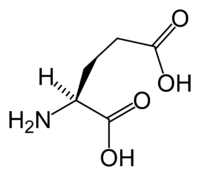
Photo from wikipedia
Neuron-glia interactions are essential for the central nervous system’s homeostasis. Microglial cells are one of the key support cells in the brain that respond to disruptions in such homeostasis. Although… Click to show full abstract
Neuron-glia interactions are essential for the central nervous system’s homeostasis. Microglial cells are one of the key support cells in the brain that respond to disruptions in such homeostasis. Although their participation in neuroinflammation is well known, studies investigating their role in ferroptosis, an iron-dependent form of nonapoptotic cell death, are lacking. To address this issue, we explored whether microglial (BV-2 cells) activation products can intensify, mitigate or block oxidative and/or ferroptotic damage in neuronal cells (HT22 cell line). Cultured BV-2 microglial cells were stimulated with 5–100 ng/mL lipopolysaccharide (LPS) for 24 h and, after confirmation of microglial activation, their culture medium (conditioned media; CM) was transferred to neuronal cells, which was subsequently (6 h later) exposed to glutamate or tert-butyl hydroperoxide (t-BuOOH). As a major finding, HT22 cells pretreated for 6 h with CM exhibited a significant ferroptosis-resistant phenotype characterized by decreased sensitivity to glutamate (15 mM)-induced cytotoxicity. However, no significant protective effects of LPS-activated microglial cell-derived CM were observed in t-BuOOH (30 µM)-challenged cells. In summary, activated microglia-derived molecules may protect neuronal cells against ferroptosis. The phenomenon observed in this work highlights the beneficial relationship between microglia and neurons, highlighting new possibilities for the control of ferroptosis.
Journal Title: International Journal of Molecular Sciences
Year Published: 2023
Link to full text (if available)
Share on Social Media: Sign Up to like & get
recommendations!